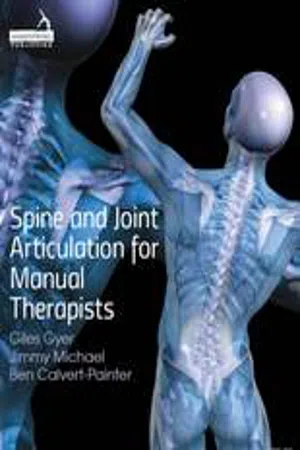In this chapter we will discuss the biomechanics and individual components of movement. We will present a general overview but will concentrate in particular on synovial joints, which are the joints that manual therapists engage with most.
Movement and stress
Human joints have to withstand considerable forces day to day from compression, shearing and tension. To do this they have evolved layers of tissues and mechanisms to protect against and dissipate the forces that daily activities generate.
Movement and stress always result in mechanical deformation of tissues and structures in the body because tissues undergo an elastic deformation when they are stretched. This deformation allows the tissue to rebound to its original shape and length if it is stretched within normal limits. However, if the tissue is stressed beyond its physical limitations of the elastic phase, it will fail to return to its original structure and will be lengthened. We call this the plastic phase of deformation (Threlkeld 1992).
Stressing the tissue beyond its maximum capacity will result in a tear of that tissue. It is, however, important to note that joint tissues typically work in the elastic phase of tissue deformation as this is vital for normal tissue homeostasis. Not undergoing a healthy deformation within the elastic phase because of lack of activity or immobilization will inhibit joints from regenerating optimally. The end result is tissue thickening, insufficient water in the tissue matrix, loss of tissue elasticity, collagen cross-bridging and shortening of tissue (Threlkeld 1992). There will be a loss of range of motion of joints and the patient will experience joint stiffness and difficulty in moving.
Joint articulation techniques which involve movements that exceed the natural motion barrier stress the tissues excessively and force them into the plastic phase of deformation and so should be avoided.
Movement and tissue repair
Healthy movement through the joint tissues can aid tissue repair and recovery. Khan and Scott (2009) discuss the theory of mechanotransduction and its stages of mechanocoupling, cell–cell communication and effector cell response. Mechanotransduction is described as ‘the process whereby cells convert physiological mechanical stimuli into biochemical responses’ (Khan & Scott 2009) or ‘the mechanical and structural cues that encourage cell behaviour’ (Ingber 2006). An example is the effect on bone mineral density in astronauts living in zero-gravity conditions and the reintroduction of gravity and loading to the skeletal system upon their return to Earth. This area is of interest because it can help our understanding of how the mechanical forces involved in distorting and stressing tissues can influence healing and promote tissue recovery by affecting their chemical structure. It also helps us to understand how poor mechanical forces can have the opposite effect, converting mechanical energy into biochemical energy. Manual therapy can aid mechanotherapy by enabling the patient to return to physical activity as quickly as possible and promoting healthy cellular homeostasis (Huang et al 2013).
Joint articulation is commonly used as a technique in manual therapy that has been shown to be effective at reducing musculoskeletal pain (Shum et al 2012). Articulations are often used with the objective to increase the range of motion of the joint through stretching of fibrous tissue and by affecting the stretch reflex excitability (Cook 2007). One theory is that repetitive movement and stretching may cause the tissue to elongate (Refshauge & Gass 2004). This elongation relates to the ability of tissues to change shape over time as a constant load is applied (Threlkeld 1992). It is thought that this effect on the tissues can increase the range of motion at the joint (McCollam & Cindy 1993, Arnoczky et al 2002, Powers et al 2008, Shum et al 2012). In addition, rhythmical movement causes a pumping action within the joint which influences the intra-articular pressure (Rice & McNair 2009), improving quality and quantity of motion. Saunders and Saunders (2004) demonstrated that articulation of the joint can also increase the vascular circulation to and from the joint during and after treatment. Bortnem and Zavertnik (2009) hypothesized that this may assist in the removal of metabolic waste products and help to balance pH levels within the joint, thus aiding the health, stability and integrity of the joint.
Given the nature of the loading, the pressure inside synovial joints and the need to achieve a low-friction environment, it is important to develop the optimum mechanical conditions after an injury to aid a joint’s recovery (Buckwalter 1998). The application of early controlled movement through a joint can aid recovery and also prevent degenerative changes to the articular surfaces (Buckwalter 1995, Buckwalter et al 1996). Buckwalter (1995) also postulated that early mobilization of the joint stimulated the recovery of the proteoglycan matrix, a theory supported by the work of Williams and colleagues (1994). Although getting patients to return to activity has been demonstrated to help articular cartilage recovery (Salter 1993, Mankin & Buckwalter 1997), loading the cartilage too soon can cause delayed recovery in the cartilage (Williams & Brandt 1984, Sun 2010). It is also suggested that the early introduction of movement helps in fluid drainage, preventing the build-up of fluid and distension forces upon the tissues and joint (Lederman 1997). In addition, prolonged distension of a joint caused by effusion could potentially decrease the blood supply to the synovial membrane, leading to...
